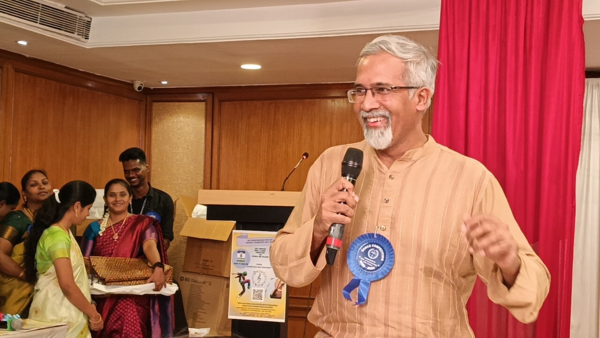The Attari-Wagah border crossing point between India and Pakistan was shut completely on May 1, 2025 following a week-long heavy rush of people from either side to cross over after the Union government ordered all Pakistani citizens with short-term visa to leave India in the wake of the Pahalgam terror attack.
Also read: Indians and Pakistanis at Attari border: The people who bear the weight of a divided history
A total of 911 Pakistani nationals left India through the Attari-Wagah border in the last seven days. Meanwhile, 23 Indian citizens with Pakistani visa also crossed over to Pakistan Similarly, 1,617 Indian nationals and 224 Pakistani nationals with long-term Indian visa entered India through the international border crossing point in Punjab’s Amritsar district.
Emotions ran high with many taking unexpected and tearful leave from relatives and friends. From the Pakistani side, several Indians made their way to India. Many families with mixed nationalities are staring at separation with no end date.
Photo:
PTI
Saba Kiran, a Pakistani national married in India, bids goodbye to her daughter as she is being deported to her country through the Integrated Check Post (ICP) at the Attari-Wagah border, near Amritsar, on April 29, 2025.
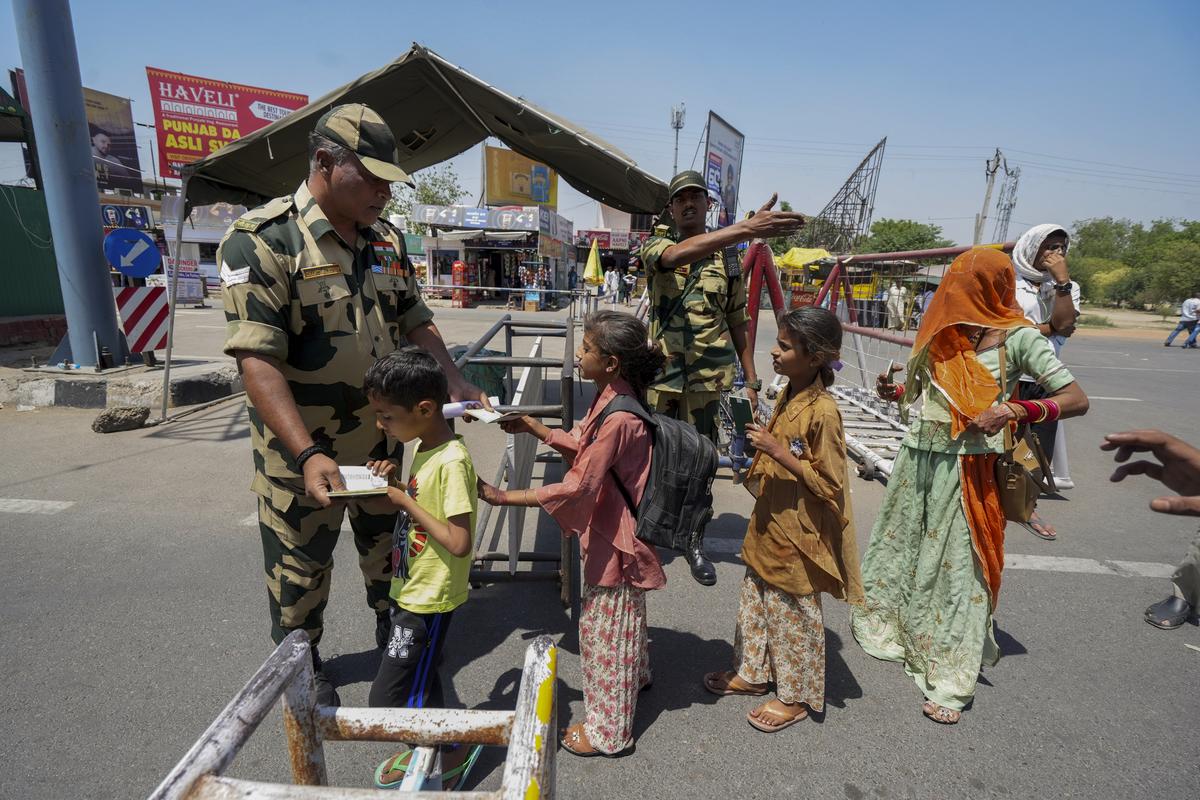
Photo:
PTI
A BSF personnel checks documents of Pakistani nationals arriving to cross over to their country as the deadline to exit India nears its end, amid escalating tensions between the two countries over the Pahalgam terror attack, at the Attari-Wagah border point, near Amritsar, on April 27, 2025.
Photo:
Reuters
Pakistani citizens sit in cars, waiting to go to Pakistan at the Attari-Wagah border crossing with Pakistan, near Amritsar, on May 1, 2025.
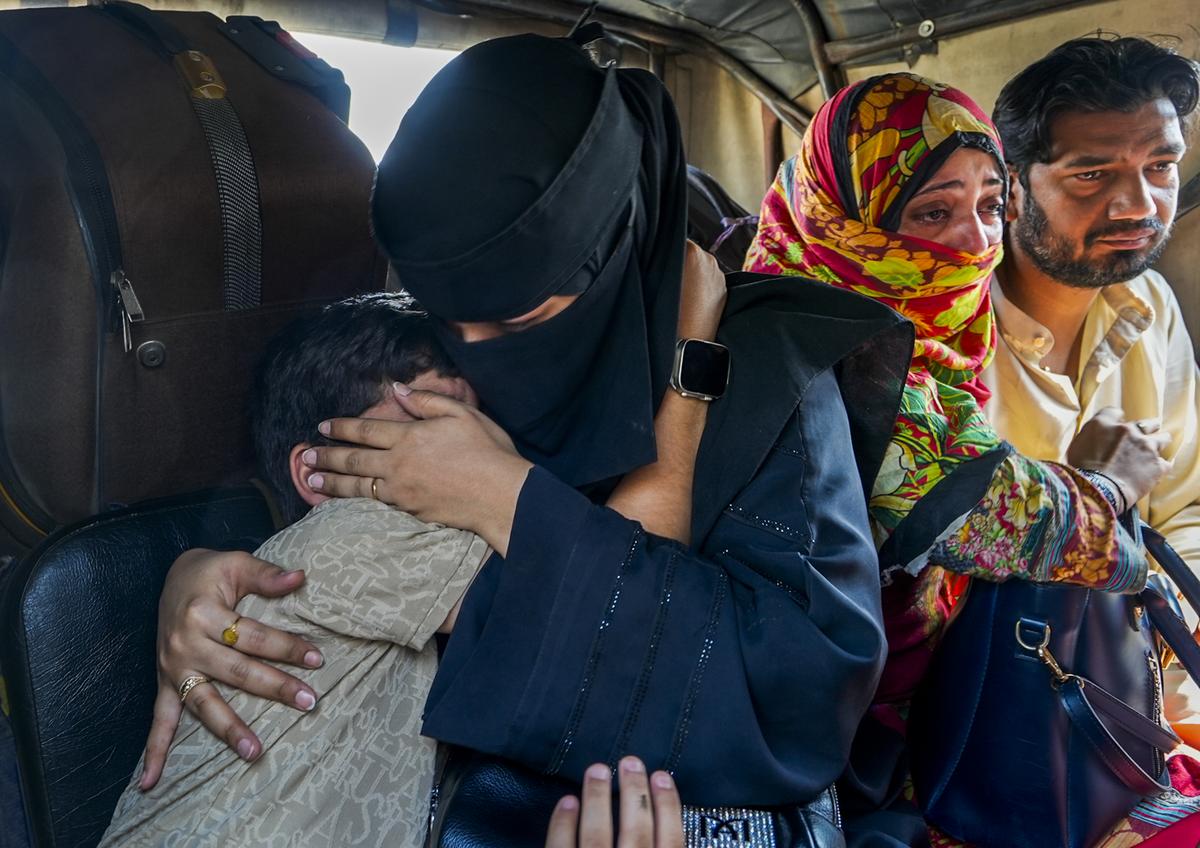
Photo:
PTI
Erum, a Pakistani national, gets emotional while leaving for Pakistan as her son Almir with Indian nationality was stopped by the authorities to go with her, at the Attari-Wagah border checkpost near Amritsar, on April 29, 2025.
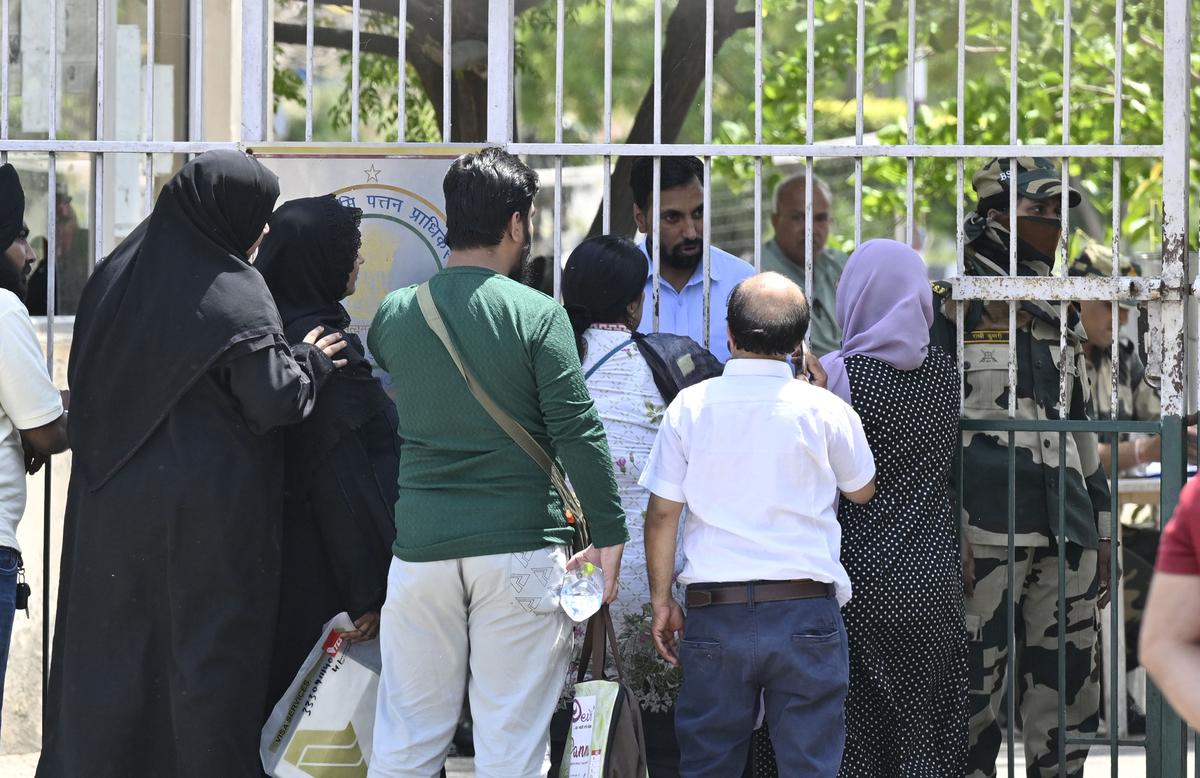
Photo:
SHIV KUMAR PUSHPAKAR
People seeking to cross border from India to Pakistan line up outside the passenger terminal at Integrated Check Post, Attari in Punjab’s Amritsar on April 26, 2025, amid escalating tensions between the two countries over the Pahalgam terror attack that killed 26 people.
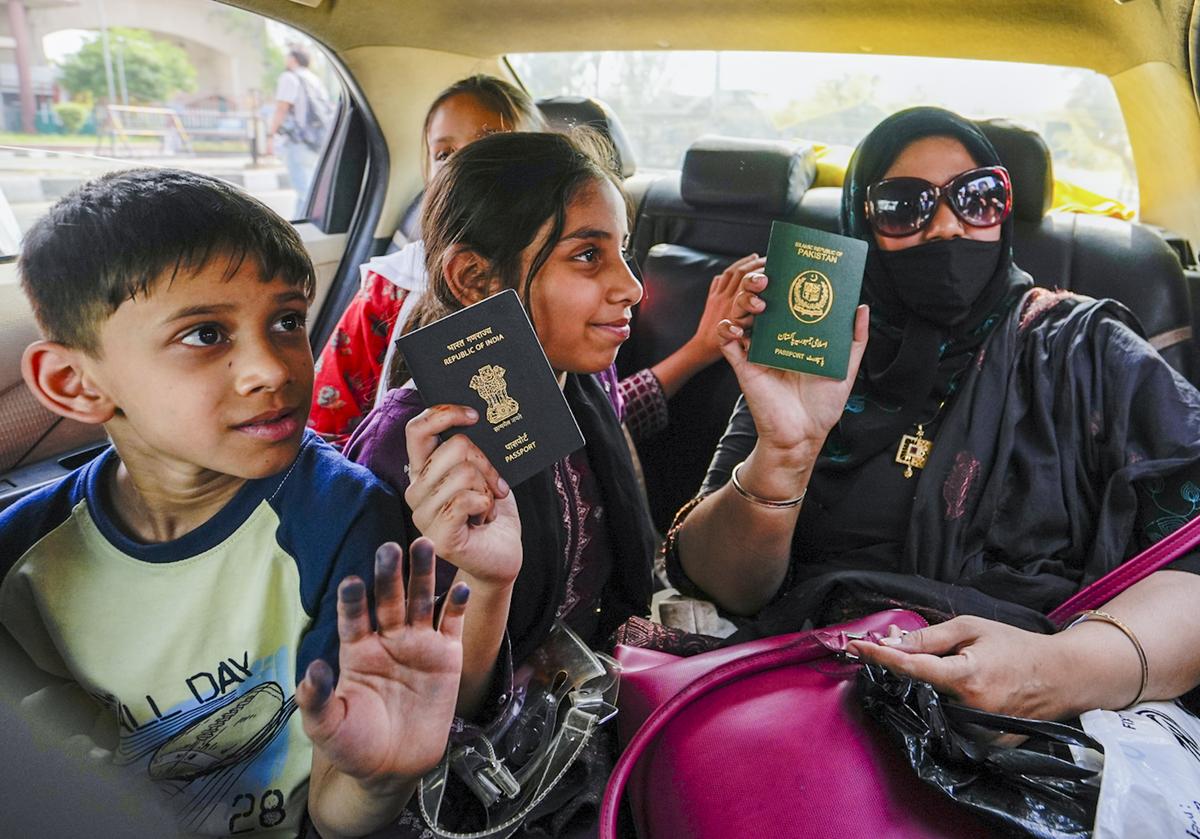
Photo:
PTI
A Pakistani national with NORI (No Obligation to Return to India) visa crosses over to India with her children, who have Indian citizenship, through the Integrated Check Post (ICP) at the Attari-Wagah border, amid escalating tensions between the two countries over the Pahalgam terror attack, near Amritsar, on April 29, 2025.
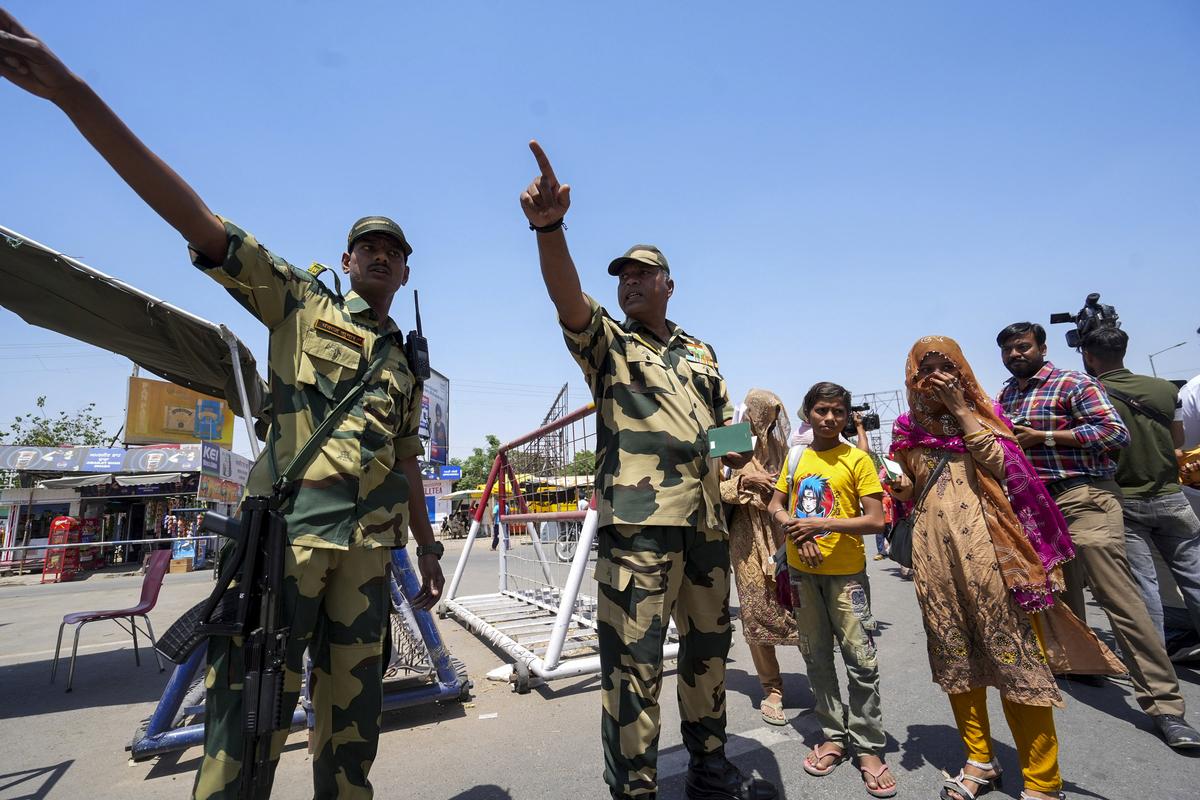
Photo:
PTI
BSF personnel check documents of Pakistani nationals arriving to cross over to their country as the deadline to exit India nears its end, amid escalating tensions between the two countries over the Pahalgam terror attack, at the Attari-Wagah border point, near Amritsar, on April 27, 2025.
Photo:
Reuters
A Pakistani woman holds a child inside a bus before crossing into Pakistan at the Attari-Wagah border crossing, after India revoked visas and suspended visa services to Pakistani citizens.
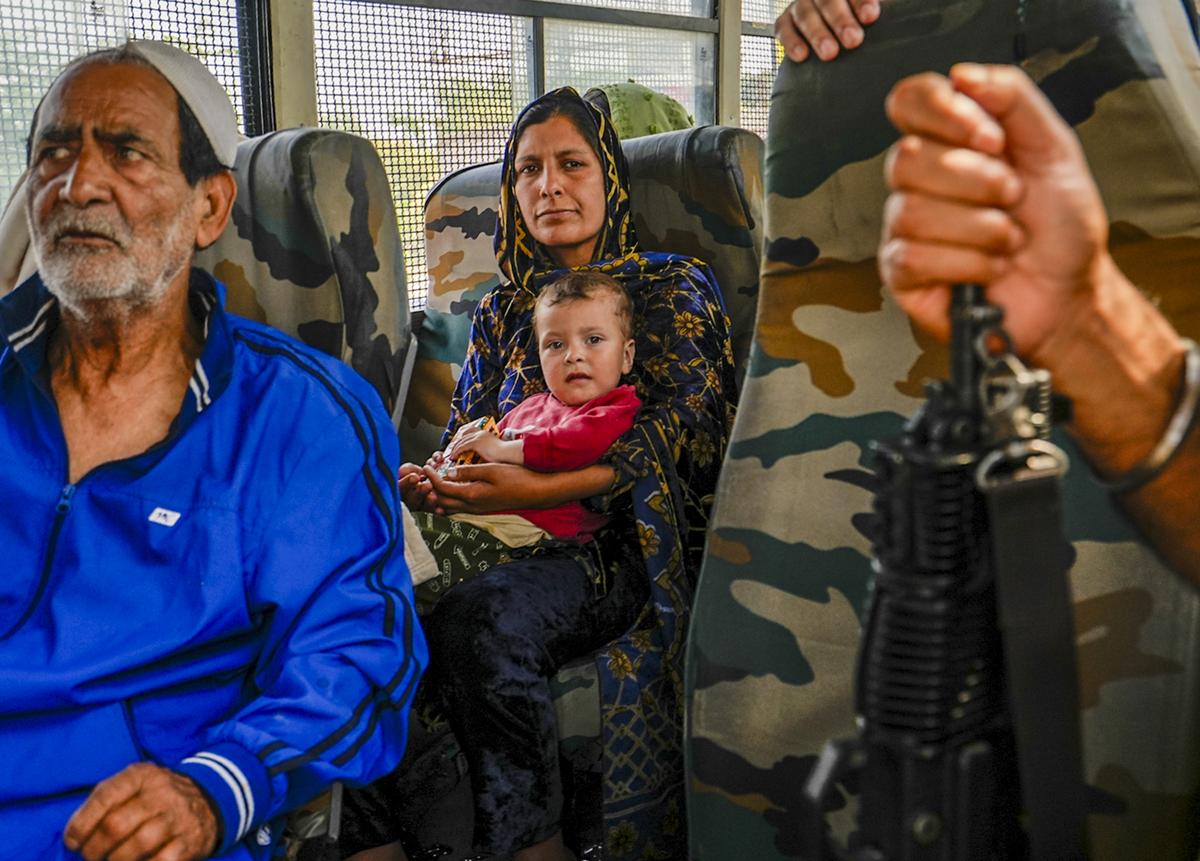
Photo:
PTI
Police bring detained Pakistan nationals, who were living in Jammu and Kashmir, to deport them to Pakistan, at the Attari-Wagah border checkpost near Amritsar, on April 30, 2025.
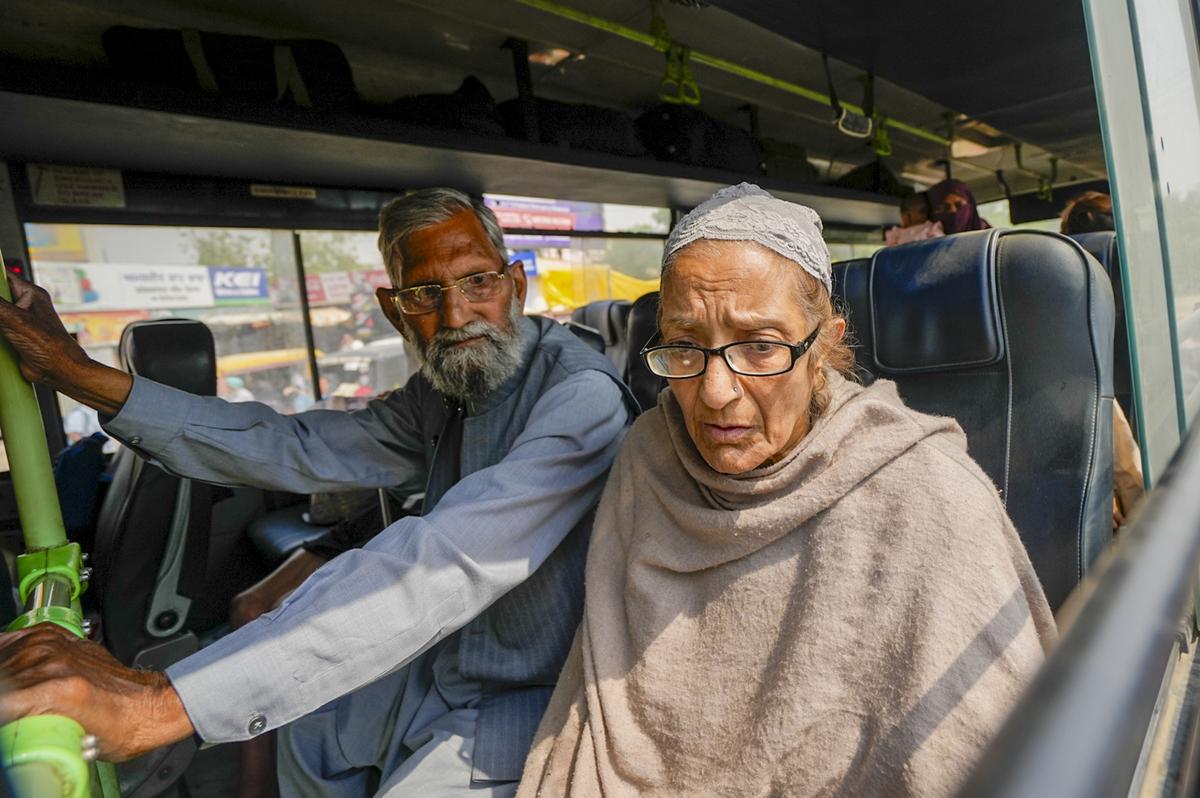
Photo:
PTI
Police bring detained Pakistan nationals, who were living in Jammu and Kashmir, to deport them to Pakistan, at the Attari-Wagah border checkpost near Amritsar, on April 30, 2025.
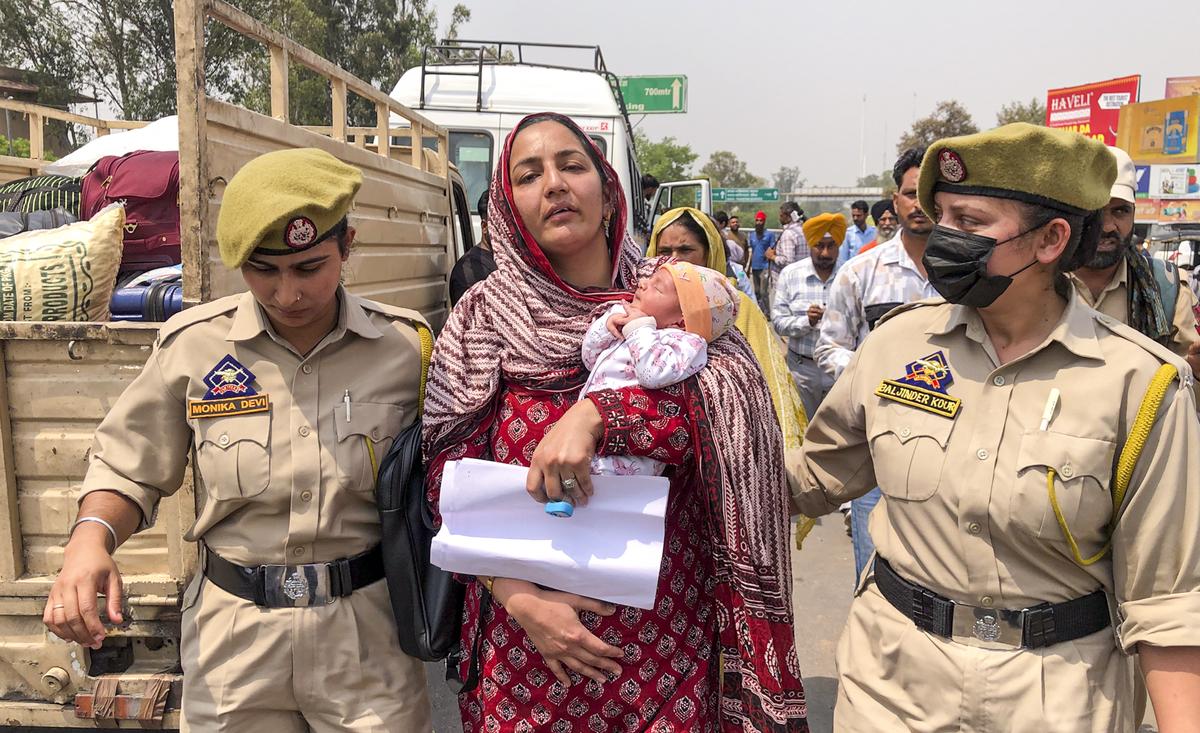
Photo:
PTI
Women police personnel take Pakistani national Sara Khan, who gave birth to a baby 14 days ago, to the Attari-Wagah border check-post, as she prepares to return to her country without her husband Aurangzeb, an Indian citizen, near Amritsar, on April 30, 2025.
Photo:
Reuters
Indian citizens speak to their Pakistani relatives in a bus carrying Pakistanis at the Attari-Wagah border crossing near Amritsar, on April 30, 2025.
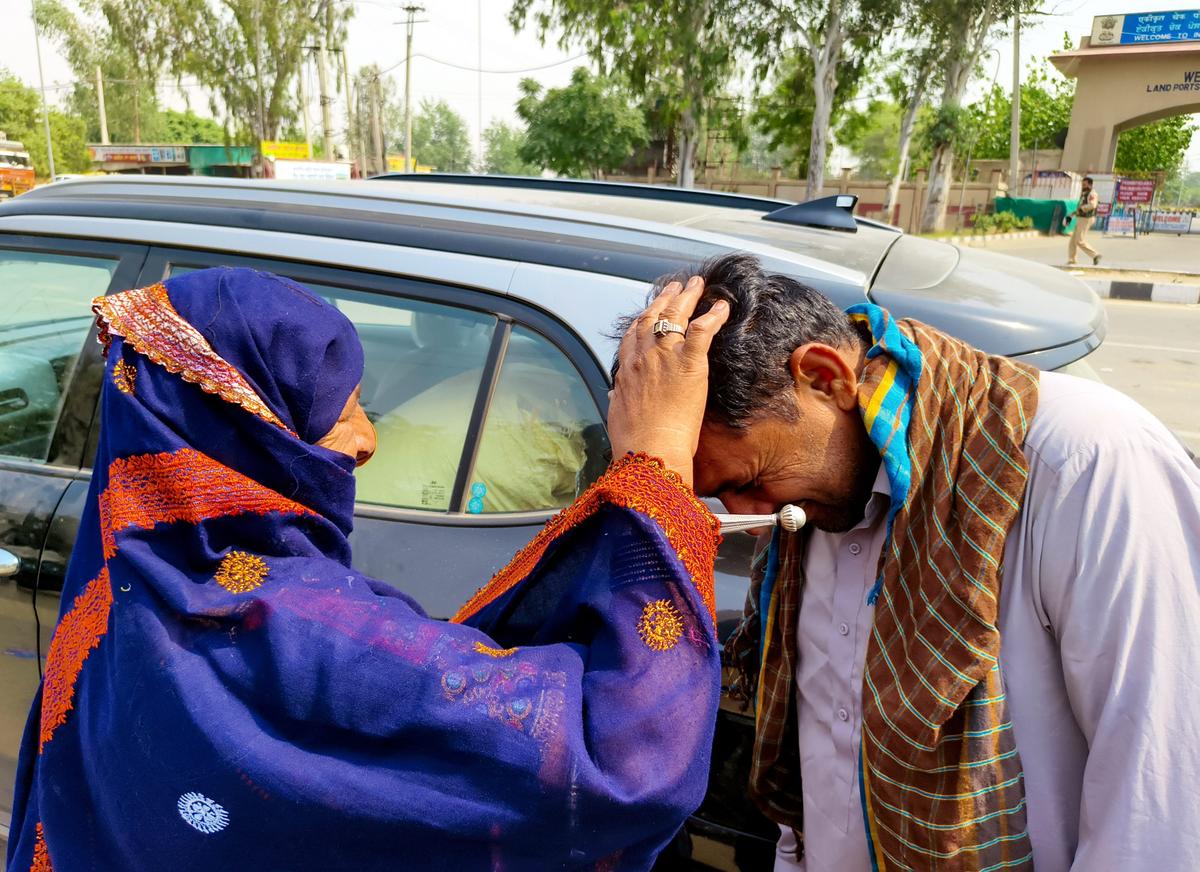
Photo:
PTI
An elderly woman greets her relative upon her return from Pakistan, at an Integrated Check Post near the Attari-Wagah border, in Amritsar district, Punjab, on April 30, 2025.
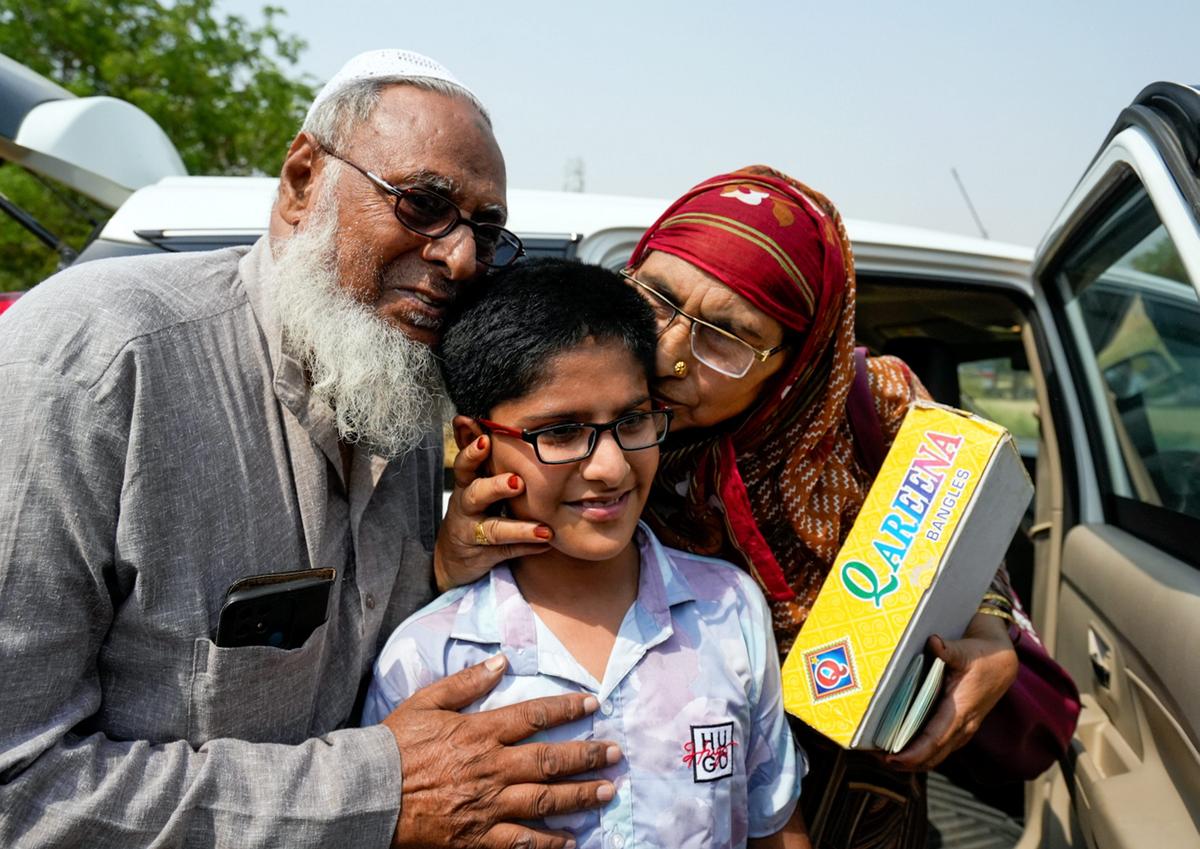
Photo:
PTI
Indian citizens greet upon their return from Pakistan, at an Integrated Check Post near the Attari-Wagah border, in Amritsar district, Punjab, on April 30, 2025.
Photo:
Reuters
Pakistani citizens take shelter under a tree as they wait to leave for Pakistan at the Attari-Wagah border crossing with Pakistan, near Amritsar, on May 1, 2025.
Photo:
Reuters
Indian citizens Sharmeen Irfan and her sister Nabeela Raaz are consoled by their brother at the closed Attari-Wagah border crossing near Amritsar, on May 1, 2025.
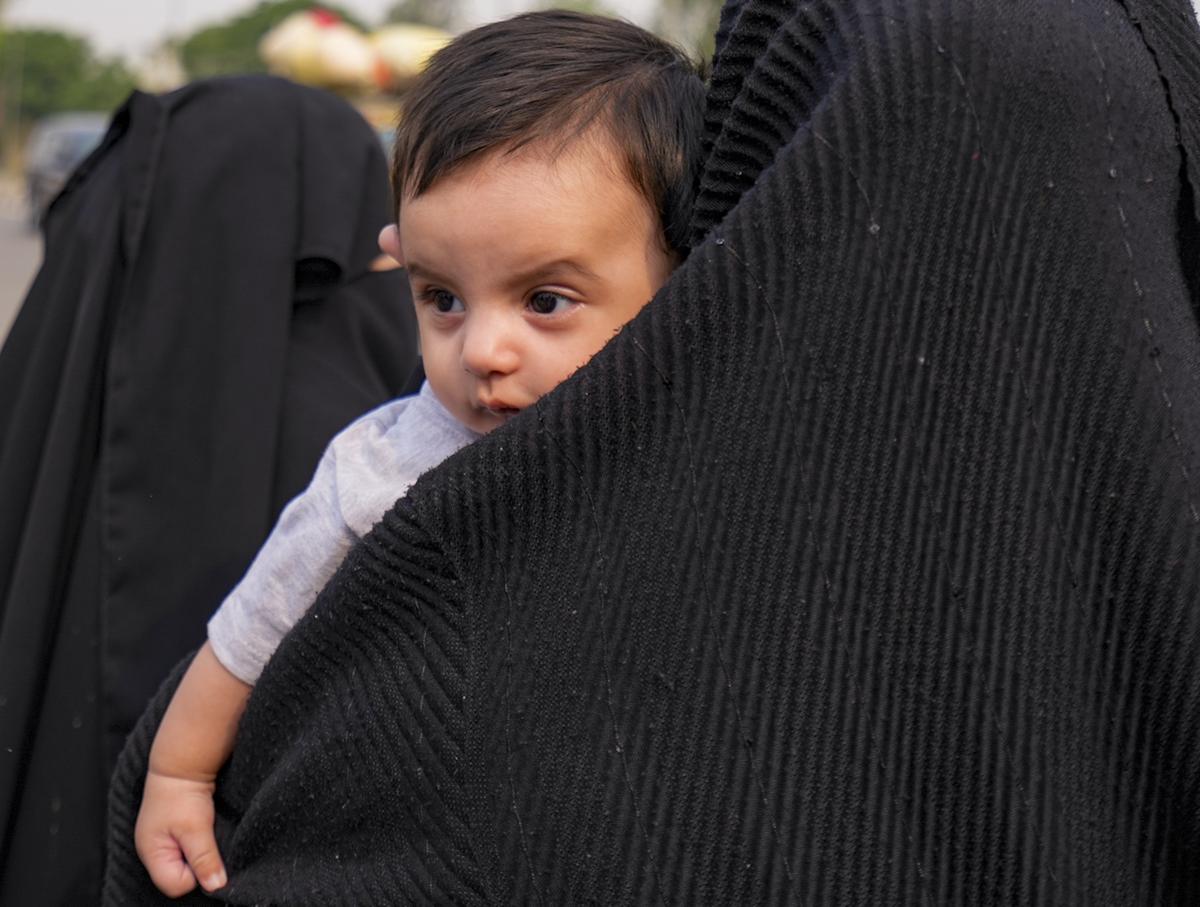
Photo:
PTI
A woman carries a child while trying to cross over to Pakistan, at an Integrated Check-Post near the Attari-Wagah border, in Amritsar district, on May 1, 2025.
Published – May 02, 2025 11:46 am IST














